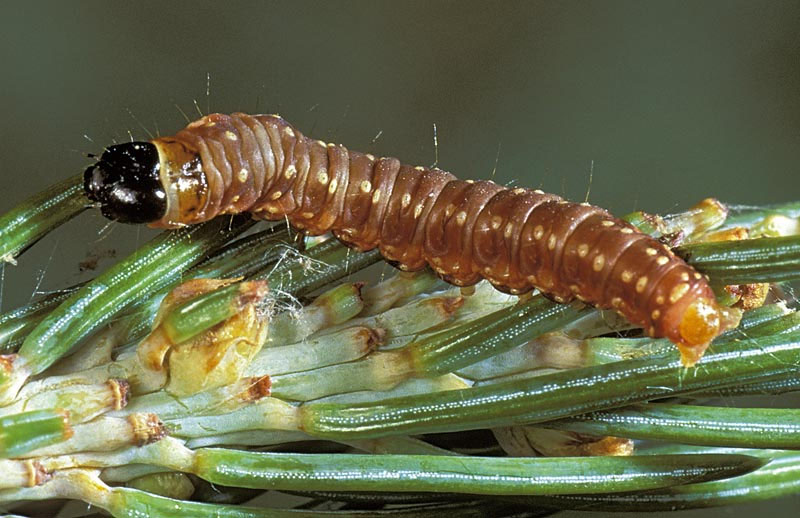Timing is Everything When Controlling Spruce Budworm
Friday, June 10, 2022
Spruce budworm is a native moth that as caterpillars chew their way into the tightly coiled buds of flowers and slowly eat them from the inside out. Budworm caterpillars start life as tiny larvae that measure less than 1.5 mm long but grow up to 50 cm over the course of the summer. These larvae start out cream colored with brown heads and light-colored stripes but mature into colors ranging from green to rust to black.
Bacillus thuringiensis var. kurstaki (Btk) is a naturally occurring bacterium that is the preferred insecticide to use safely against spruce budworm. Btk application is linked to the active feeding period which peaks mid-May to Mid-June depending on the year. Due to this year’s cooler spring weather delaying tree development, landowners should be starting to see budworm activity picking up soon. Btk is not a contact herbicide and must be physically ingested, therefore trees should be carefully monitored to ensure spruce budworm are sprayed at the ideal time. The L4 larval development stage when spruce budworm is feeding most heavily is the best timing to protect tree foliage.
Btk products such as Safers or Bioprotec can be purchased at local hardware stores or garden centers. These products come in concentrate form which means they must be mixed with water prior to application. Wind speed should be considered when applying Btk to ensure sufficient application. As well, the temperature should be less than 20°C and there should be no heavy precipitation immediately prior to, during, or after application.

Larvae of Eastern Spruce Budworm (Photo courtesy Natural Resource Canada, Canadian Forest Services)
Posted in:
Agriculture
Weeds & Pests